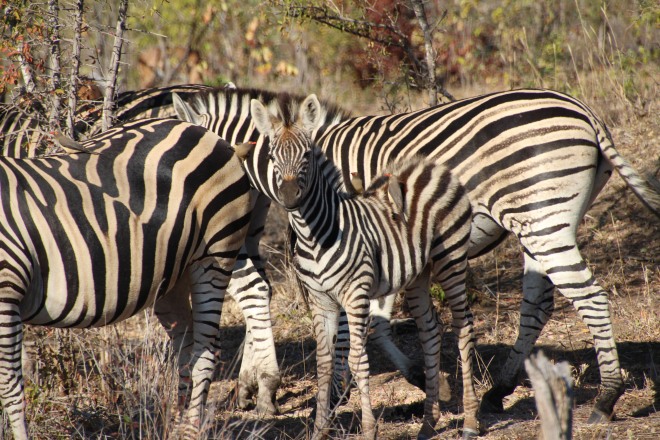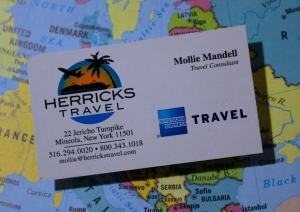When visiting South Africa, the goal is to see the “Big Five” game animals: lion, elephant, buffalo, leopard, and rhinoceros. The term was originally coined by hunters to represent the five species most difficult to hunt on foot, but has since been adopted by the tourism industry to denote optimum viewing experiences. Adding in two additional animals — the hyena and cheetah –means that you have also achieved the “Magnificent Seven.” Although never a guarantee, we were very fortunate to sight all seven animals during our safari.
My recent articles highlighted my family’s adventure in South Africa — truly a trip of a life time. Our journey began in Cape Town (read recent articles here) where we enjoyed city, wineland, and national park exploration. Next, we hopped a bush plane to reach the next leg of our trip — safari in Sabi Sands (for safari planning tips, click here). We stayed in Little Bush Camp, located in one of the great private reserves adjacent to Kruger National Park. To read about our experience at this amazing lodge, click here.

Out of the hundreds and hundreds of photos we snapped, it is impossible to play favorite. So, here are just a few that will give you a small taste of the wild and wonderful creatures we encountered during out travels in Sabi Sabi:



At a kill, a lion tends to gorge himself and can consume up to 25 percent of its body mass in only a few hours. Afterwards, a rest is much needed!


We came upon this matriarchal breeding herd of elephants. The females can be identified by their tusks, which are smaller than the males’.

The African Buffalo, also known as the Cape Buffalo, can travel amongst very large herds and can spend up to 18 hours a day foraging and moving.

The Greater Kudu, noted for its long and twisted antlers, is related to the antelope.



The cheetah is the fastest land animal. We were lucky to catch him at rest, mid-meal.

The leopard’s whiskers help guide it through the thick vegetation and compliments its excellent night vision making it a lethal predator.


We witnessed these wild dogs as they pursued an impala. Our safari vehicle could barely keep up with them as they raced through the bush — the dogs’ initial speeds can top 66 kilometers per hour.



Despite the giraffe’s long neck, it contains only seven vertebrae — the same number as a human and most mammals.

The hyenas’ bite is the most powerful of all mammals and will crush the thick bones of their prey in order to access the nutritious marrow contained within. Seeing (and hearing!) them in action in the pitch darkness was an intense sight to behold.



The beautiful stripes of the zebra actually serve a purpose: to effectively heat and cool the animal.


We followed along in our vehicle as this leopard, which had suffered an injury in a fight with another animal, walked the stream bed in search of water.

Wildebeest have many predators: lion, leopard, cheetah and wild dog.

All creatures great and small are part of the safari experience. Here a dwarf mongoose peaks out of his home, a repurposed termite mound.

Hippos cannot float, which is why they are often seen resting in shallow water.

We couldn’t help but name this hornbill “Zazu” in honor of the character in the movie “The Lion King.”

And, not far away we spotted his “Lion King” companion, “Pumbaa,” otherwise known as a warthog.

Impalas are known for their characteristic stripes, but only the males have horns.


Unfortunately, rhinos are being hunted into near extinction. More about this in an upcoming article highlighting our visit to Tinstwalo Safari Lodge, located in the Manyeleti Private Preserve.
S UBSCRIBERS: to view this complete article online and read my previous articles, use this link: uniquefamilytraveler.com.
UBSCRIBERS: to view this complete article online and read my previous articles, use this link: uniquefamilytraveler.com.
To become a SUBSCRIBER, look for the “subscribe to this blog by email” box, and then respond to the follow-up email.
For more information on my trip planning services, please click here.
Herricks Travel American Express

Great pictures . Very up close and personal
LikeLiked by 1 person
Thank you! It was an amazing trip!
LikeLike
Mollie: Thanks for sharing Africa with me once again. I was spellbound by this latest post. I had wondered if you all would witness the kill or be killed of the African animal world. You did. And that open air jeep doesn’t look like protection enough but you all made it back! I learned so much as you obviously did from your guide. So that is why zebra’s have stripes! Best, Eileen RS
LikeLike
Great photos. We recently spent some time in the Sabi Sands and this brought back happy memories. Great shots of the Leopards considering they are very hard to spot!!
LikeLike
Dear John,
Thank you very much for reading my blog. I am glad it brought back good memories! Sabi Sands is definitely a unique and special place!
Regards,
Mollie
LikeLike